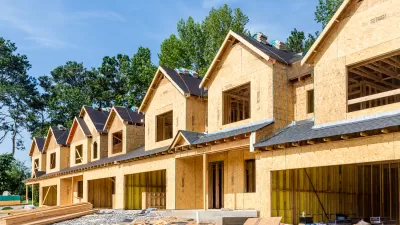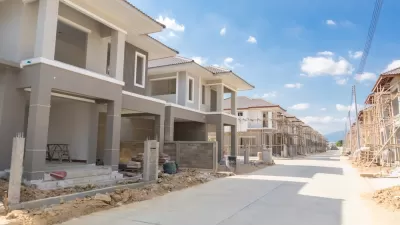Is the return of the factory town the solution to jump-start new housing construction? Myron Curzan and Janet Lowenthal propose a plan for developing housing that caters specifically to workers stuck in between affordable and median housing.
In an essay for Urban Land, Curzan and Lowenthal detail their plan for employer-sponsored housing projects, in partnership with local governments and Fannie Mae, that will house employees who fall above the local median income levels but are still unable to afford housing at the market-rate. Workers most likely to benefit from this type of housing projects would be firefighters, police officers, hospital workers, teachers and other non-profit workers.
Curzan and Lowenthal claim that the mismatch between employee earnings and housing market prices is resulting in increased turnover rates, a troublesome concern for local economies. They write, "there is no way for a nurse in San Jose making about $75,000 to afford the median-priced house costing $545,000, or for a university employee in New York City making $60,000 to afford a median-priced unit costing $375,000. Most foreclosed properties are also out of reach because they are too expensive, involve a long commute, require substantial repairs, or all of the above."
Cities in high demand of affordable for-sale units include Boston, D.C., and Seattle. The idea is compelling, but will these and other cities in need of this niche housing solution find it workable in their own communities?
FULL STORY: A Jump Start for Housing

Pennsylvania Mall Conversion Bill Passes House
If passed, the bill would promote the adaptive reuse of defunct commercial buildings.

Planning for Accessibility: Proximity is More Important than Mobility
Accessibility-based planning minimizes the distance that people must travel to reach desired services and activities. Measured this way, increased density can provide more total benefits than increased speeds.

World's Largest Wildlife Overpass In the Works in Los Angeles County
Caltrans will soon close half of the 101 Freeway in order to continue construction of the Wallis Annenberg Wildlife Crossing near Agoura Hills in Los Angeles County.

Eviction Looms for Low-Income Tenants as Rent Debt Rises
Nonprofit housing operators across the country face almost $10 billion in rent debt.

Brightline West Breaks Ground
The high-speed rail line will link Las Vegas and the Los Angeles area.

Colorado Bans No-Fault Evictions
In most cases, landlords must provide a just cause for evicting tenants.
City of Costa Mesa
Licking County
Barrett Planning Group LLC
HUD's Office of Policy Development and Research
Mpact Transit + Community
HUD's Office of Policy Development and Research
Tufts University, Department of Urban and Environmental Policy & Planning
City of Universal City TX
ULI Northwest Arkansas
Urban Design for Planners 1: Software Tools
This six-course series explores essential urban design concepts using open source software and equips planners with the tools they need to participate fully in the urban design process.
Planning for Universal Design
Learn the tools for implementing Universal Design in planning regulations.


























